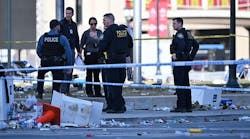Campus Lockdowns – How and Why
As we near the opening of another fall semester or quarter, it is time to review a college or university emergency plan to make sure it is still relevant and up to any task it may face.
One can imagine that reports of a gunman opening fire near a university might force its administration and staff to make the difficult decision to lockdown the campus to help keep anyone from entering or leaving.
Such a decision may affect the lives of students, faculty and staff and will certainly be closely scrutinized by the campus trustees, law enforcement, parents and the surrounding community.Campus lockdowns can also result from other factors, such as tornados and wildfires, chemical spills or bomb threats. During my six years in charge of security for Washington, D.C. Public Schools, I rarely had to lockdown a campus, but when I did it was done in close consultation with my staff and local law enforcement personnel.
There are no cut-and-dried criteria for ordering a lockdown. Every circumstance is different and needs to be considered on its own merits. But before even considering a lockdown, make sure your campus has an emergency plan in place.
The first step in creating such a plan is the establishment of a security task force, which should include representatives from every major area of campus – for example, academic affairs, campus police, IT, human resources, mental health services, legal counsel, facilities and so on.
The task force should have endorsement from the highest levels of the university’s leadership, including the chancellor, president and/or board of trustees. This demonstrates that the university considers security a top priority and helps to ensure the active participation of staff. Once the task force is in place, the information gathering process should begin.
Be comprehensive in the approach, considering every possibility, so that the security plan addresses all potential scenarios. Omitting even one potential threat from the plan may compromise security. At the beginning of the risk assessment, one of the most important tasks is to seek the guidance of a qualified and experienced security solutions provider. A quality provider is specially trained in spotting security vulnerabilities and can recommend the appropriate measures to address those situations.
I’ll have more on the planning process for a lockdown in my next post.
(Patrick V. Fiel Sr., public safety advisor for ADT Security Services, provides security advice to schools, government agencies and private industry. He has more than 30 years of security and law enforcement experience.)




